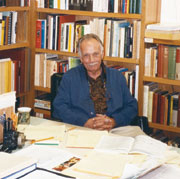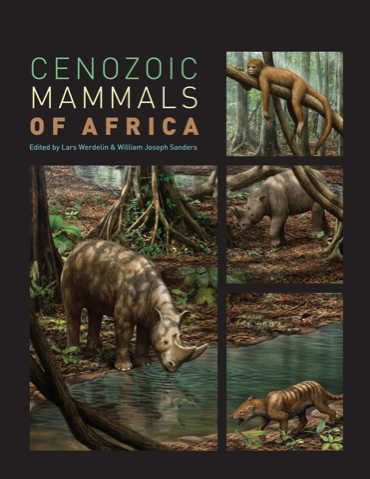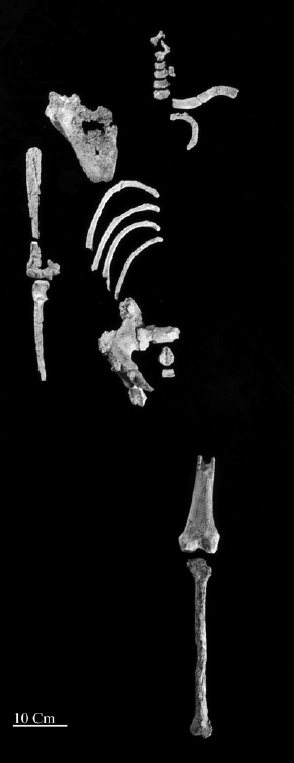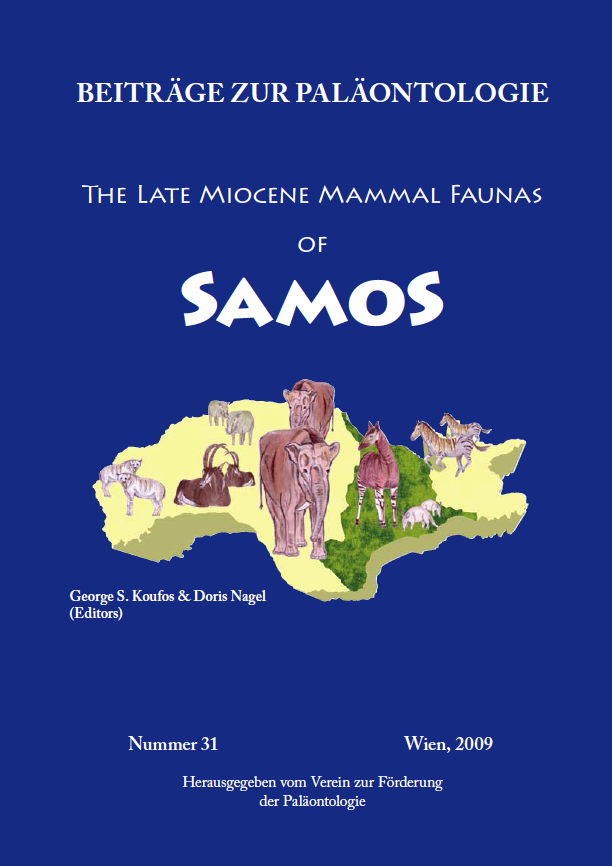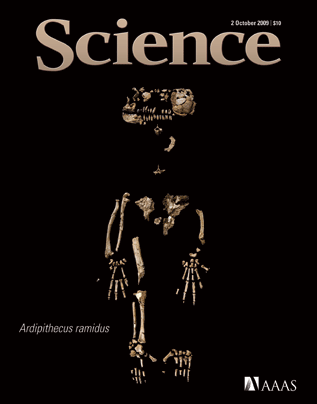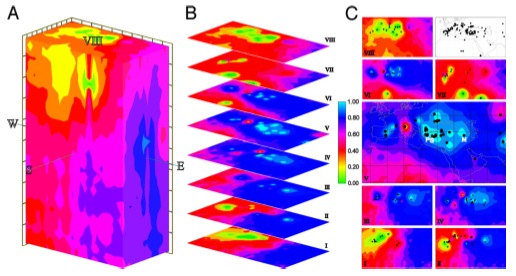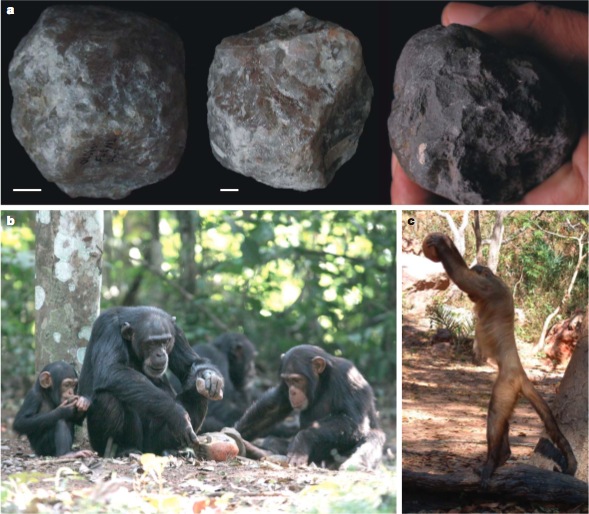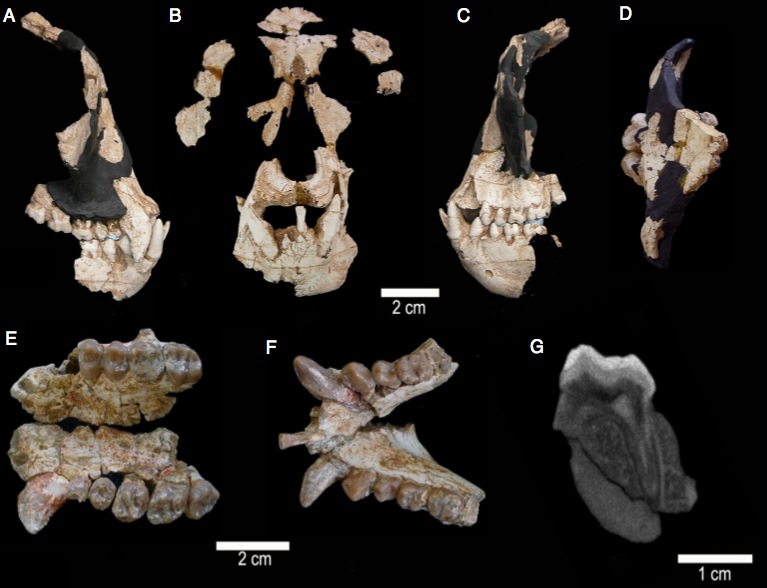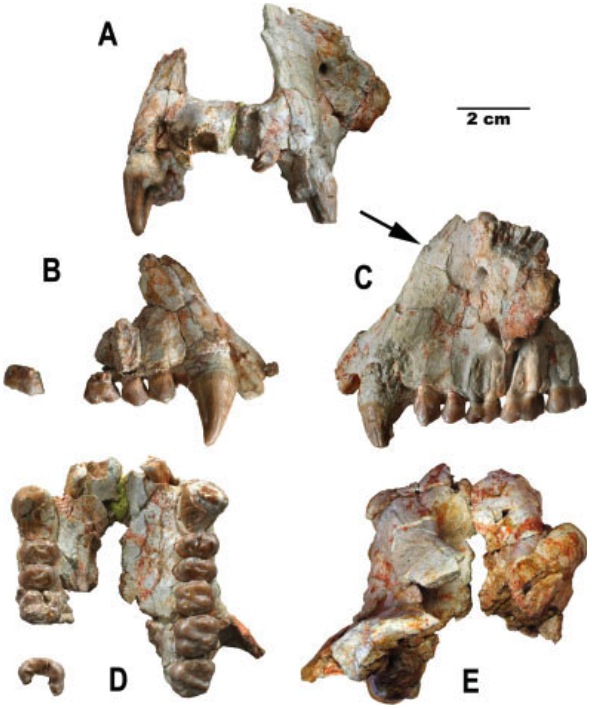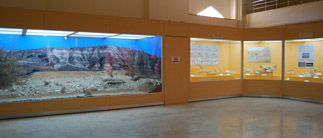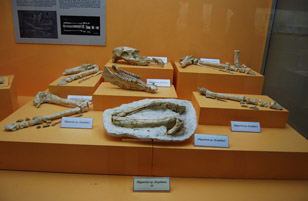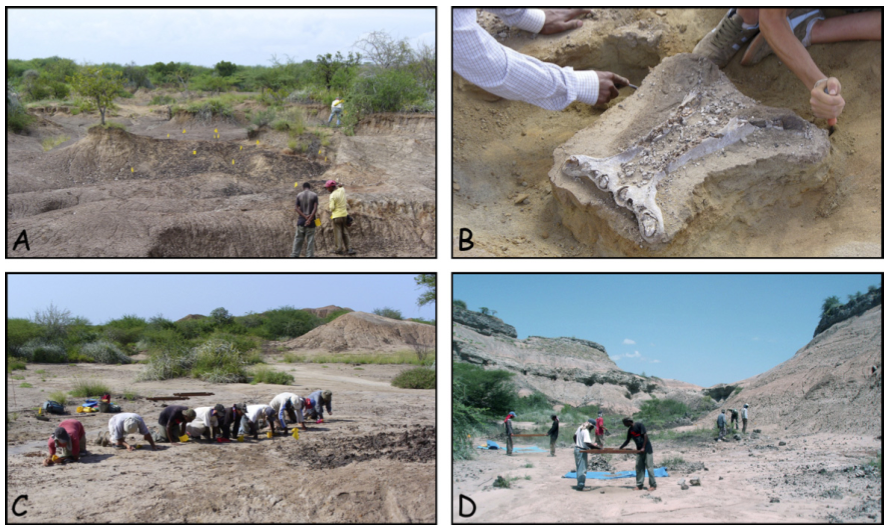| HOME • EDUCATION • RHOI PUBLICATIONS • RHOI BIBLIOGRAPHY • RHOI STRUCTURE • INFORMATICS • MAP 
With the exception of the RHOI Supported portion of the RHOI Bibliography, this website was archived on January 16, 2011. Inquiries should be directed here |
| F.
Clark Howell
|
| LATEST ANNOUNCEMENTS August 31, 2010 Berkeley, California, USA The primary work of the RHOI is now complete. Lasting from 2003-2010, the RHOI is the single largest paleoanthropological research project ever funded by the NSF. Work by numerous scholars around the globe has led to the discovery and publication of 6 new hominid/oid sites. Combined with work at pre-existing sites, RHOI-funded projects recovered 191 hominid/oid fossils including the earliest gorilla from Chorora, and the earliest skeleton of Australopithecus from Woranso-Mille. In all 355 researchers from 161 institutions spread across 32 countries contributed to the 6363 pages of published material (as of July 2010) resulting from RHOI funding. Of the 370 published articles, 35 were published in Science, Nature, or PNAS. These high profile papers captured the imagination of the public to the tune of 100 stories in newspapers and other popular media along with 2 television programs. The RHOI would like to thank all of our colleagues and contributors for their hard work through the duration of the project. For further details on the accomplishments of the RHOI, CLICK HERE.
July 9, 2010 Berkeley, California, USA (Publications) The University of California Press has announced the publication and imminent release of the volume "Cenozoic Mammals of Africa." Edited by RHOI member L. Werdelin and W. Sanders, the book contains reviews, updates, and revisions of numerous taxa and concepts in mammalian paleontology. RHOI participants contributed to many of the chapters in the book. In particular, the construction of chapters on Bovidae (by A. Gentry), Cercopithecoidea (by N. G. Jablonski and S. Frost), Equidae (by R. Bernor, M. Armour-Chelu, H. Gilbert, T. M. Kaiser, and E. Schultz), and Hippopotamidae (by E. Weston and J.-R. Boisserie) was assisted by RHOI Analytical Working Group and Project funding. This volume will quickly become a necessary reference on mammalian paleobiology of the last 65 million years. (Image: University of California Press) June 22, 2010 Woranso-Mille, Ethiopia (Exploration) (RHOI-supported) A new paper available online from 21 June in the Proeedings of the National Academy of Sciences USA describes the skeleton of a large adult male Australopithecus afarensis. Nicknamed "Kadanuumuu" or "Big Man" this new find consists of exclusively post-cranial material including several ribs, a scapula, a partial pelvis and arm and leg bones (HAILE-SELASSIE, Y., B. M. LATIMER, M. ALENE, A. L. DEINO, L. GIBERT, S. M. MELILLO, B. Z. SAYLOR, G. R. SCOTT and C. O. LOVEJOY (2010). "An early Australopithecus afarensis postcranium from Woranso-Mille, Ethiopia." Proceedings of the National Academy of Sciences). This unique trove of elements indicates full bipedalism in Australopithecus afarensis, a disputed characteristic of the "Lucy" skeleton. The skeleton, dated to 3.6 Ma, was found at a site first identified by the Afar Rift exploration project of the RHOI led by Dr. Yohannes Haile-Selassie of the Cleveland Museum of Natural History. Later work outside of RHOI funding led to the discovery of the skeleton and its subsequent restoration, analysis, and publication.
(Image: National Academy of Sciences) November 2, 2009 Thessaloniki, Greece (Contextual) (RHOI-supported) A recently released volume of Beitrage zur Palaontologie, volume 31, describes the history of and new research in the Mytilinii Basin of Samos Island, Greece. Edited by G. D. Koufos and D. Nagel, this new volume includes descriptions of the stratigraphy of the basin and newly recovered fossil material from pollen, to micromammals, and many large herbivores, including a diverse perissodactyl community. Of particular interest at this Late Miocene site is the carnivore community, whose fossil remains are described and whose guild structure is analyzed in separate contributions. In all this volume comprises 17 chapters and 428 pages by 13 authors and provides a valuable source of information on Late Miocene European mammals.
(Image: Herausgegeben vom Verein zur Forderung der Palaontologie) October 1, 2009 Addis Ababa, Ethiopia; Washington, DC; Berkeley, CA (Contextual) (RHOI-supported) The October 2, 2009 issue of the journal Science is a special issue devoted to the skeleton of Ardipithecus ramidus. The special issue includes 11 articles by a total of 47 authors from 10 countries. Resulting from 15 years of painstaking excavation, preparation, reconstruction, and analysis, the articles provide a unique and invaluable introduction to 'Ardi' and the habitat occupied by Pliocene hominids. RHOI is privileged to be associated with this research. For further information go to: UC-Berkeley Press Announcement and for FREE DOWNLOAD of ALL Ardipithecus papers, go to: Science Magazine Ardipithecus Site. (Image: AAAS) July 25, 2009 Helsinki, Finland, and Washington, DC (Contextual) (RHOI-supported) The classic site of Pikermi in Greece is well known as a representative site for the origination and spread of open-adapted fauna during the Late Miocene. In the July 21, 2009 issue of the Proceedings of the National Academy of Sciences of the USA, J. T. Eronen and colleagues describe the rise and fall of Pikermi-like faunal assemblages over an 8 million year time span from 12 Ma to 4 Ma (ERONEN, J. T., M. MIRZAIE ATAABADI, A. MICHEELS, A. KARME, R. L. BERNOR and M. FORTELIUS (2009). "Distribution history and climatic controls of the Late Miocene Pikermian chronofauna." Proceedings of the National Academy of Sciences 106 (29): 11867-11871). Combining climate data based on hypsodonty indices and atmospheric circulation models with genus-level faunal resemblance indices based on data downloaded from the Neogene Old World database project, the authors conclude that the Late Miocene Climate of the Paratethys region was conducive to modern savanna-like faunal communities, but that Mio-Pliocene boundary atmospheric pressure changes led to a drier central Europe and more humid Eastern Mediterranean causing the extinction of the Pikermi-like faunas (Eronen et al., 2009). Much of the work in this paper grew out of a 20-year collaboration between Prof. Mikael Fortelius and Prof. Ray Bernor. It is one of the goals of RHOI to support and help establish productive academic partnerships such as this and foster discussions between researchers from different parts of the globe to further scientific progress in Late Miocene paleontology.
(Image: J. T. Eronen et al., 2009, Figure 2 ) Cambridge, UK (Meetings News, AWGs) (RHOI-supported) Featured in the July 16, 2009 issue of Nature is a review article discussing current progress in and future prospects for Primate Archaeology (HASLAM, M., et al. (2009). "Primate archaeology." Nature 460 (7253): 339-344). As the archaeological record now extends past the earliest dates of Homo, and more primate species are found to be using more complex tools and food procurement strategies, “For a comprehensive comparative study of the development of technology, we must establish the antiquity and form of tools used by non-human-primate ancestors (and potentially also tool-using species outside the primates), along with their ecological contexts” (Haslam et al., 2009; 341). Some of the discussions leading to this publication occurred at RHOI-Supported meetings of the Comparative Behavior and Ecology Analytical Working Group led by Dr. W. C. McGrew, a co-author of the Nature paper. The intersection of primate ethology and archaeology described in this article opens exciting new avenues of research for understanding the development of human technology and cognition.
(Image: M. Haslam et al., 2009, Figure 2 ) July 15, 2009 Barcelona, Spain (Contextual) (RHOI-supported) In a pair of articles in the Proceedings of the National Academy of Sciences of the USA and the American Journal of Physical Anthropology, both published in June 2009, a team of researchers working in the Valles-Penedes basin in Spain led by S. Moyà-Solà and M. Köhler described a partial face with mandible of an 11.9 Ma hominoid of a hitherto unknown genus and species, which they name Anoiapithecus brevirostris, and a partial face of the previously named hominoid Dryopithecus fontani dating to 11.8 Ma (MOYÀ-SOLÀ, S., D. M. ALBA, S. ALMÉCIJA, I. CASANOVAS-VILAR, M. KÖHLER, S. DE ESTEBAN-TRIVIGNO, J. M. ROBLES, J. GALINDO and J. FORTUNY (2009). "A unique Middle Miocene European hominoid and the origins of the great ape and human clade." Proceedings of the National Academy of Sciences 106 (24): 9601-9606, and MOYÀ-SOLÀ, S., M. KÖHLER, D. M. ALBA, I. CASANOVAS-VILAR, J. GALINDO, J. M. ROBLES, L. CABRERA, M. GARCES, S. ALMECIJA and E. BEAMUD (2009). "First partial face and upper dentition of the Middle Miocene hominoid Dryopithecus fontani from Abocador de Can Mata (Valles-Penedes Basin, Catalonia, NE Spain): Taxonomic and phylogenetic implications." American Journal of Physical Anthropology 139 (2): 126-145). The newly described hominoid Anoiapithecus brevirostris offers support for the hypothesis that the hominid clade (including all modern great apes and their ancestors as opposed to just humans and their ancestors) originated in Eurasia, and that Hominines originated via a back-to-Africa dispersal (Moyà-Solà et al., 2009a). In the Dryopithecus paper, Moyà-Solà and colleagues give an in depth description of the hominoid specimens discovered in the Valles-Penedes basin along with a history of previous fossil research in the vicinity. In examining the first lower face of a Dryopithecus, the authors find the first evidence of a Gorilla-like face in the fossil record, though the authors consider these features to likely be convergent with Gorillas as opposed to placing Dryopithecus as a direct ancestor of Gorillas (Moyà-Solà et al., 2009b). These exciting finds from Spain have greatly increased knowledge of Middle Miocene hominoids and helped elucidate the origins of modern great apes. Check back to this Newsfeed for further exciting announcements from Valles-Penedes.
(Image 1: S. Moya-Sola et al., 2009a, Figure 1; Image 2: S. Moya-Sola et al., 2009b, Figure 6.) June 1, 2009 SIVAS, TURKEY (Outreach) (RHOI-supported) Since 2003 the Sivas Late Miocene Project has recovered numerous well-preserved mammalian fossils in the Sivas area of Central Turkey. In collaboration with The Republic of Turkey's Ministry of Culture and Tourism, Prof. Erksin Gulec (University of Ankara), Dr. Cesur Pehlevan (University of Yuzuncuyil), Dr. Aysen Acikkol (University of Sivas), Dr. Ismail Ozer (University of Ankara), Ayhan Yigit (University of Sivas), Mehmet Alkan (Sivas Museum of Archaeology), and Ferhat Kaya (CSU East Bay) coordinated the construction of a new Late Miocene exhibition section in the Sivas Museum of Archaeology to display these fossil finds. In making the fossil material accessible to students and the people of Sivas, the new exhibit serves as a means to teach evolutionary theory and the natural history of the area. RHOI has played an integral role in the recovery and preservation of significant fossil material from Anatolia.
(Images: Cesur Pehlevan) January 20, 2009 POITIERS, FRANCE (Meetings News) (RHOI-Supported) The December, 2008 edition of Comptes Rendus Palevol is a special issue entitled “African Carnivora from the Middle Miocene to the Pleistocene: New data, systematics, evolution, biogeography” and contains papers from the Carnivore AWG meeting that took place in May 2008, in Poitiers, France (see June 27, 2008 news item). The volume contains 12 new research articles on the evolution of carnivores from the Miocene to the Pleistocene covering Italy, Europe (Koufos and de Bonis), Chad (de Bonis et al.), Ethiopia, Kenya, Northwest Africa (Geraads), and South Africa (Hartstone-Rose and Wahl). The taxa studied include lutrinae (Haile-Selassie, Lewis), Megantereon (Sardella et al.), Eucyon (Garcia), Herpestidae, Mustelidae, Hyaenidae (Semenov), Felidae (Peigne et al.), and Creodonts (Morales and Pickford), along with several papers on general carnivore evolution (Werdelin, de Bonis). Carnivores are especially important for reconstructing paleoenvironments and understanding the selective pressures on contemporary fauna, both prey and other meat-eaters, including hominids (de Bonis, 2008). This volume represents an important summary and valuable resource of new data on late Tertiary carnivore evolution.
(Image: Academie des Sciences / Elsevier Masson SAS)
OMO, ETHIOPIA (Informatics) The first publication citing use of the RHOI database template was published in the October, 2008 issue of Comptes Rendus Palevol. The Omo Group Research Expedition recently reinitiated expeditions to the Shungura formations after a 30 year hiatus in 2006 and 2007. The new publication details work done over the previous two field seasons by an international team of scholars and collectors. The catalogue used by the team stores “all inventory and contextual data” in a database that “follows the Revealing Hominid Origins Initiative database template” (Boisserie et al., 2008) The RHOI thanks the Omo Group Research Expedition for supporting our work. Continue to check the Newsfeed for additional projects using the RHOI database template.
Collection methods employed during the 2006-07 field seasons of the Omo Group Research Expedition (Image: Boisserie et al., 2008, Figure 2)
DECEMBER 6, 2007 BERKELEY, CA A major goal of the Revealing Hominid Origins Intiative is to standardize data management and facilitate the sharing of comparable and accurate specimen-level paleontological data within a global scientific consortium. To this end, the RHOI has just released a free-for-download FileMaker database template that is both PC and Mac compatible. Navigate to http://rhoi.berkeley.edu/RHOI_Database_Template/downloads.php and follow the on-screen instructions to try out the new RHOI Database Template today.
AUGUST 20, 2007 BERKELEY, CA F. Clark Howell, one of the pillars of human evolutionary studies in the modern era, passed away March 10, 2007 at his home in Berkeley. A co-founder of the RHOI, Clark's inexhaustible curiosity and ability to create and stimulate truly multidisciplinary science drove nearly half a century of research in paleoanthropology and beyond. The example he set will no doubt continue to drive new and challenging research far into the future. A memorial website has been established in Clark's honor. Please visit the F. Clark Howell Memorial website by clicking on the link to the left or on the picture of Clark above.
|

